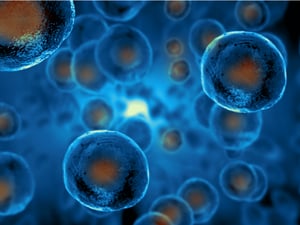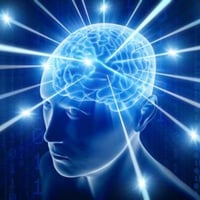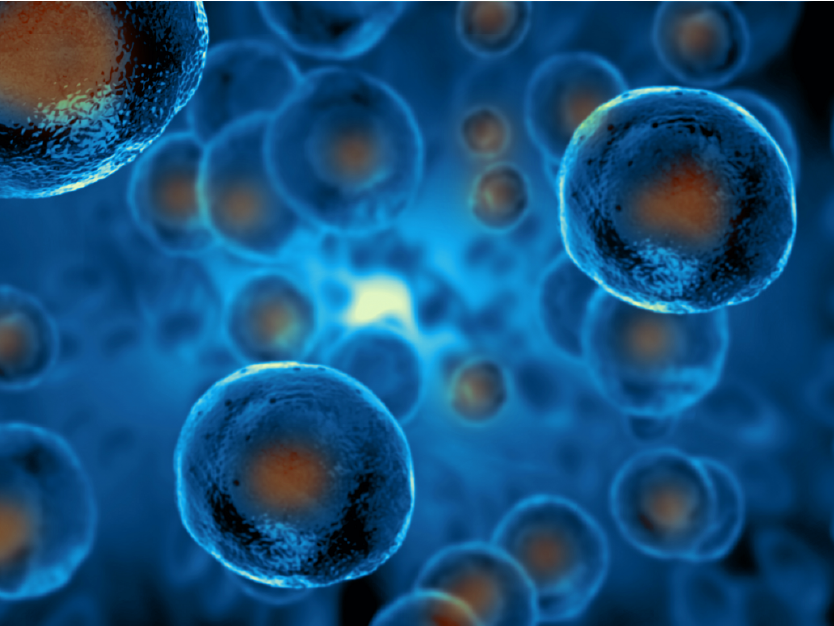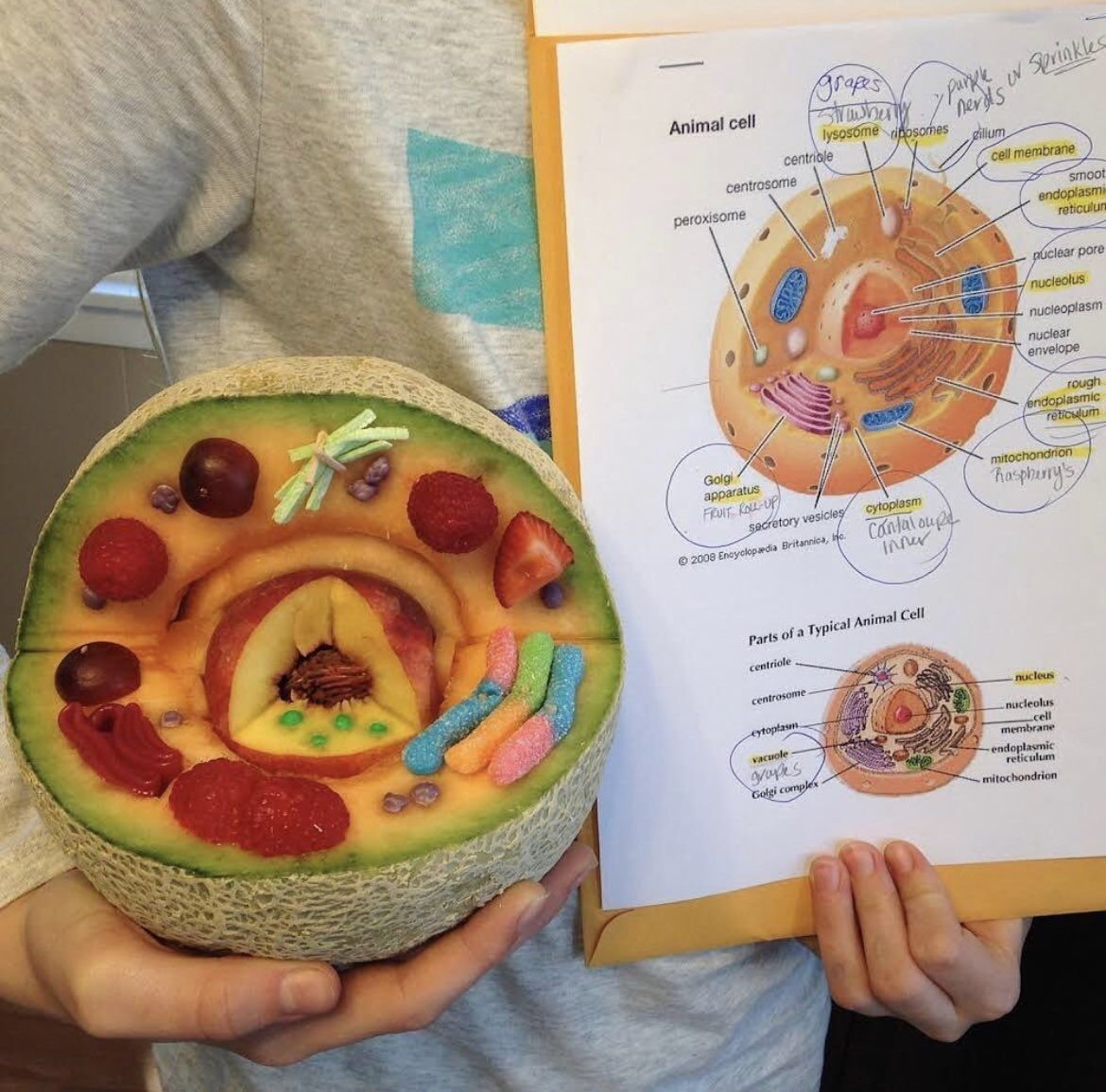 As I march slowly toward the twilight of my life, ever more I wake up with aches and pains and can hear the sounds of popping bubble wrap or Rice Krispies drowning in milk every time I make any major movements. Everyone deals with the realization of their own mortality in different ways. Some decide to finally climb Mount Everest or go skydiving. For me, I decided to look into the research behind cellular aging, and how we can make the most of our later years with the power of knowledge and biomedical science. This does remind me of that one episode of Star Trek where Jake and Nog have to get stuff for a mad scientist's cellular regeneration and entertainment chamber, which is supposed to restore the cells to a younger state and keep them from being literally bored to death. If you consider some of the treatments and technology being implemented or proposed these days, it almost seems like Star Trek has inspired yet another advancement beyond just cell phones and Alexa.
As I march slowly toward the twilight of my life, ever more I wake up with aches and pains and can hear the sounds of popping bubble wrap or Rice Krispies drowning in milk every time I make any major movements. Everyone deals with the realization of their own mortality in different ways. Some decide to finally climb Mount Everest or go skydiving. For me, I decided to look into the research behind cellular aging, and how we can make the most of our later years with the power of knowledge and biomedical science. This does remind me of that one episode of Star Trek where Jake and Nog have to get stuff for a mad scientist's cellular regeneration and entertainment chamber, which is supposed to restore the cells to a younger state and keep them from being literally bored to death. If you consider some of the treatments and technology being implemented or proposed these days, it almost seems like Star Trek has inspired yet another advancement beyond just cell phones and Alexa.
The Hallmarks of Aging
Similar to the famous hallmarks of cancer that I reference in many blogs since I was a cancer biologist, Cell sparked a huge uptick in the research into aging since the first review was published. Ten years later, the journal has commissioned another review of the advances and insights that have been made. 1
The original and the updated review both adhere to the following criteria:
- The time-dependent manifestation of alterations accompanying the aging process;
- The possibility to accelerate aging by experimentally accentuating the hallmark;
- The opportunity to decelerate, halt, or reverse aging by therapeutic interventions to the hallmark.
With a decade of research that included advances in mammalian and non-human primate animal models, the reviewers can now propose 12 hallmarks of aging that include cellular senescence, genetic instability (similar hallmarks exist for cancer as well), and loss of proteostasis. The criteria listed above are feasible as evidenced by mouse models, including the senescence-accelerated mouse/prone (SAMP) line, which exhibit accelerated aging as deliberately bred and engineered into the mouse strain. 1, 2 There is also plenty of evidence that reactivation of telomerase in mouse models can reverse aging by manipulating the hallmark of telomere attrition. 1
 We discussed the loss of proteostasis previously in our blog about the vesicular transport system, but this phenomenon is prevalent in aging-related dementia as waste products and damaged proteins build up in nerve cells. Loss of proteostasis is exacerbated by dysfunction in the autophagic pathways as the cells and body are no longer able to effectively clear out damaged and unusable products. In addition, and we're sensing a theme here, the chronic inflammation that accumulates as we age to spur physical and cognitive slowdown, which includes arthritis and neurodegenerative disorders. 1, 3 As more biomarkers are discovered, medical science can devise new and more effective strategies to at least slow down the aging process and alleviate some of the aches and pains.
We discussed the loss of proteostasis previously in our blog about the vesicular transport system, but this phenomenon is prevalent in aging-related dementia as waste products and damaged proteins build up in nerve cells. Loss of proteostasis is exacerbated by dysfunction in the autophagic pathways as the cells and body are no longer able to effectively clear out damaged and unusable products. In addition, and we're sensing a theme here, the chronic inflammation that accumulates as we age to spur physical and cognitive slowdown, which includes arthritis and neurodegenerative disorders. 1, 3 As more biomarkers are discovered, medical science can devise new and more effective strategies to at least slow down the aging process and alleviate some of the aches and pains.
Therapeutic Opportunities
Aside from eating right, exercising, and doing brain exercises like Sudoku to keep our minds sharp, what can be done to slow down or perhaps even reverse aging? One approach is to use the advances in proteomics and genetic therapies and delivery systems to reduce or completely eliminate senescent cells. 3 In this sense, an individual can be profiled for their particular phenotype of senescent cells, or "senotype," thus allowing a drug therapy to target the detrimental senescent cells while allowing beneficial subsets (for example, the ones that favor wound healing and tumor suppression) to survive, but this is a process that requires more research and fine-tuning. Better screens and prognostic methodology require more knowledge of aging-associated biomarkers.
Animal models, including in mice, have also shown possibilities of reprogramming cells to enact tissue and organ repair, which could have applications ranging from skin wound healing to recovery from traumatic brain, spinal cord, and other nervous system injuries. 1, 2 You can see parallels between aging research and research into cancer pathways, neurological development and regeneration, and other disciplines, as the reversal of aging-related damage is akin to bringing the cell back to a state of "normalcy" where everything is functioning effectively to keep it alive and energetic.
In the same issue of Cell as the new hallmarks of aging review, a study was published showing that reactivation of endogenous retroviruses (ERVs) in aging organisms can induce senescence and can contribute to chronic inflammation. 4, 5 The authors proposed using these novel viral particles as a serum biomarker in humans to measure biological age and thus further refine any therapeutic interventions for aging patients.
As an aside, if you ever have a chance to peek inside the training rooms of professional athletes, you see a lot of massage tables, standing pools (both heated and cold), and cryochambers for their recovery. Many amateur and professional athletes have been busted for using performance enhancing drugs such as human growth hormone to recover rapidly after workouts and get a step up on the competition, so there's yet another example of how more research in aging--and reversing its effects--can prolong the careers of our favorite athletes...within the confines of the rules, of course.
Aging Gracefully
Part of human innovation, of course, is the greatly increased lifespan of the population as better diet and nutrition, exercise techniques, medicine, and quality of life have improved. With increased lifespans comes the need to properly care for the elderly and help them maintain their aging bodies and minds in the ongoing struggle against time. Like even a well-maintained sports car, cellular wear and tear will eventually become too much to overcome, but there is much we can control to extend our warranties and the working life of our bodies, even if we can't become immortal in a cellular regeneration and entertainment chamber.
Although we cannot live forever, as masterfully stated by Queen, we can make the years that we have as fulfilling as possible. The scientific minds and resources going towards aging research is critical to humanity living its best life at any age, and maybe we can all live long enough and be lucid when the 28th Avengers movie comes out so we can enjoy it together.
References
- Lopez-Otin et al. (2023) "Hallmarks of aging: An expanding universe." Cell 186(2):243-278 (this was a long read).
- Cai N, Wu Y & Huang Y (2022) "Induction of Accelerated Aging in a Mouse Model." Cells 11(9):1418 (Epub).
- Walker et al. (2022) "Connecting aging biology and inflammation in the omics era." The Journal of Clinical Investigation 132(14):e158448 (Epub).
- Dasgupta N & Adams PD (2023) "Is aging a 'Retro'spective event?" Cell (preview) 186(2):233-235.
- Liu et al. (2023) "Resurrection of endogenous retroviruses during aging reinforces senescence." Cell 186(2):287-304.



